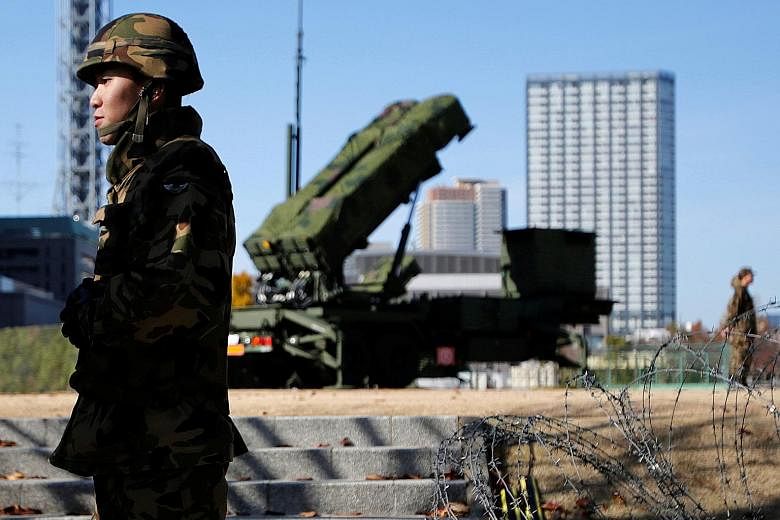TOKYO • Japan is upgrading its Patriot Advanced Capability (PAC-3) missile defence system in time for the 2020 Tokyo Olympic Games, adding the range and accuracy needed to intercept more advanced North Korean ballistic missiles, sources with knowledge of the plan said.
The move represents the most significant upgrade to Japan's missile defence system in a decade and is part of an increase in military spending in the region, where geopolitical tensions are rising.
The roll-out of the new advanced Missile Segment Enhancement, which could double the range of the current PAC-3 missiles to around 30km, will likely start next year, said the sources, who were not authorised to speak publicly about the project. "The upgraded PAC-3 is necessary to counter the Musudan," said one source, referring to Pyongyang's intermediate-range ballistic missile.
North Korea in June test-fired what appeared to be two Musudan rockets. The first failed, but the second travelled 400km, more than halfway towards the south-west coast of Japan, and reached a height of 1,000 km - enough altitude to give its warhead a range of more than 3,000km.
Experts said that test represented a technological advance for the Pyongyang regime, which is also developing nuclear weapons. It puts it a step closer to being able to lob a warhead that could plunge to its target at speeds of several kilometres a second, potentially too fast for the current PAC-3 batteries that are the last line of defence against missile strikes.
South Korea's military operates the older PAC-2 system and has a programme to replace it with the PAC-3 system by 2018, a South Korean Defence Ministry official said.
United States forces based in the country were also planning to upgrade their PAC-3 batteries covering Seoul, the official added.
Along with North Korea's missile and nuclear tests, tensions in Asia are being fuelled by ongoing territorial disputes between China and Japan in the East China Sea, and between China and several South-east Asian nations in the South China Sea. China is swiftly modernising its armed forces, in part to counter what it sees as a strategy of containment in the US' Asian "pivot".
A spokesman for Japan's Defence Ministry said "nothing has been decided" on the PAC-3 upgrade.
Japan is also considering purchasing the advanced Terminal High Altitude Area Defence, or Thaad, an anti-missile system which Washington and Seoul agreed to deploy in South Korea earlier this month.
Japan has Aegis-equipped destroyers patrolling the Sea of Japan that are loaded with interceptor missiles designed to hit incoming projectiles. It is currently developing a new version dubbed the Standard Missile 3 with the US, designed to destroy ballistic warheads in space.
REUTERS

